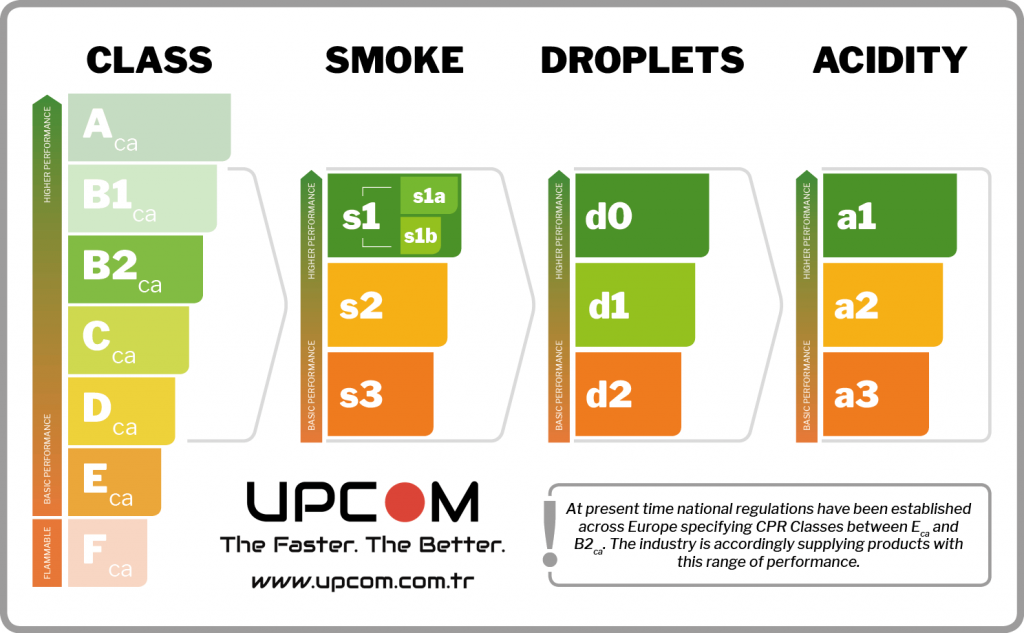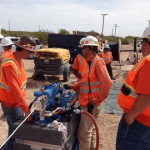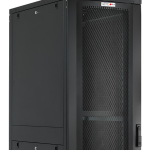21 Jan CPR compliant Cables, All Your Questions are now answered!
What does CPR mean in cable?
In the context of cables, CPR stands for Construction Products Regulation. It is a European Union regulation that applies to all construction products that are placed on the EU market. The CPR sets out minimum requirements for the performance of construction products in relation to various aspects of safety and health, such as fire safety, mechanical resistance and stability, and safety in use.
Under the CPR, all cables that are placed on the EU market must be tested and certified for their reaction to fire performance, which includes aspects such as:
- Fire behavior
- Heat release
- Smoke development
- Droplets/Particles formation
- Acidity/corrosivity
Based on the performance, the cable will be classified into different categories and will be labeled with CE marking. The CPR also requires that a Declaration of Performance (DoP) is provided by the manufacturer or their authorized representative for each product that is placed on the EU market, which contains information about the product’s identity, performance characteristics, manufacturer’s name and address, identification number of the notified body, date of the DoP and the date of the last assessment and verification of constancy of performance, the CE marking and the identification number of the notified body.
In summary, CPR in cable means Construction Products Regulation, it is a European Union regulation that applies to all construction products that are placed on the EU market, all cables that are placed on the EU market must be tested and certified for their reaction to fire performance, based on the performance the cable will be labeled with CE marking, and a Declaration of Performance (DoP) is required to be provided by the manufacturer or their authorized representative for each product that is placed on the EU market, which contains information about the product’s identity and performance characteristics.
The CPR (Construction Products Regulation) certificate is a European Union (EU) regulation that applies to all construction products that are placed on the EU market. It is a mandatory certification that ensures that the product has been tested and meets the minimum performance requirements for fire safety.
Fiber optic cables fall under the category of low voltage power, signal, and communication cables. According to the CPR, these types of cables must be tested and certified for their reaction to fire performance, which includes the following aspects:
- Fire behavior: This includes the spread of flames, smoke development, and the formation of droplets or particles.
- Heat release: This includes the amount of heat released by the cable during a fire.
- Smoke production: This includes the amount of smoke produced by the cable during a fire.
- Toxicity: This includes the toxicity of the gases produced by the cable during a fire.
- Acid gas emission: This includes the amount of acid gas (such as hydrogen chloride) produced by the cable during a fire.
All fiber optic cables that are manufactured and sold in the EU must have a CPR certificate. The CPR certificate is issued by a notified body, which is an independent third-party organization that is accredited by the EU to test and certify products for compliance with the CPR.
In summary, the CPR certificate for fiber optic cables is a mandatory certification that ensures that the product has been tested and meets the minimum performance requirements for fire safety. This includes the reaction to fire performance such as fire behavior, heat release, smoke production, toxicity, and acid gas emission. The CPR certificate is issued by a notified body and all fiber optic cables that are manufactured and sold in the EU must have a CPR certificate.
CPR compliant Cables, CPR remains a tricky topic. Last July 1 there were some changes regarding the CPR application for cables. How was that again with CPR and what has changed?
The Construction Products Regulation (CPR) contains harmonized fire safety regulations for construction products in the EU. The regulation provides a common technical language for assessing the performance of construction products. It concerns all construction products intended to be permanently incorporated in construction works. The regulation dates back to July 2013, but initially for construction products other than cable. After a transition year, the regulation has therefore been valid for building-bound cables since 1 July 2017. This means, among other things, that from this date cable manufacturers and importers may only place cables on the market that meet the fire performance standard EN 50575 as described in the CPR. (Click here for 2 hour rated fire resistant fiber optic cables)
The CPR divides products into different fire classes from F to A1. With cables limited, this has so far been from Fca to B2ca, where ca stands for cable:
In addition, extra criteria have been added to the Dca, Cca and B2ca classes:

CPR compliant Cables
CPR Certified Cables
In the context of cables, CPR stands for “Construction Products Regulation” which is a regulation of the European Union (EU) that sets out the requirements for the fire performance of construction products. This includes cables used in building and infrastructure projects. The CPR aims to ensure that construction products used within the EU do not contribute to the spread of fire and have adequate fire performance characteristics.
The CPR requires that all cables used in building and infrastructure projects within the EU must be classified according to their fire performance. The classification is based on the results of fire performance tests, which include tests for flame spread, heat release, and smoke emission.
Cables are classified into different “classes” depending on their fire performance:
Class B The most stringent classification, used for cables intended for use in critical infrastructure and public transport.
Class C: Used for cables intended for use in buildings and infrastructure where human life is at risk.
Class D: Used for cables intended for use in commercial and industrial buildings.
Class E: Used for cables intended for use in residential buildings.
It is important to note that CPR compliance is mandatory for cables used in building and infrastructure projects within the European Union. By using CPR compliant cables, building owners, contractors and other stakeholders can be confident that the cables have been tested to high standards and will not contribute significantly to the spread of fire in the event of an emergency.
What is CPR compliance?
CPR compliance refers to meeting the requirements of the Construction Products Regulation (CPR) in the European Union. The CPR is a regulation that sets out the requirements for the fire performance of construction products, including cables used in building and infrastructure projects.
To be considered CPR compliant, a cable must pass a series of fire performance tests, including tests for flame spread, heat release, and smoke emission. These tests are designed to evaluate the cable’s performance when exposed to fire conditions, and the results are used to determine the cable’s classification according to the CPR.
Cables that are CPR compliant are classified into different “classes” depending on their fire performance.
Class Eca: The most stringent classification, used for cables intended for use in critical infrastructure and public transport.
Class E: Used for cables intended for use in buildings and infrastructure where human life is at risk.
Class C: Used for cables intended for use in commercial and industrial buildings.
Class B: Used for cables intended for use in residential buildings.
It is important to note that CPR compliance is mandatory for cables used in building and infrastructure projects within the European Union. By using CPR compliant cables, building owners, contractors and other stakeholders can be confident that the cables have been tested to high standards and will not contribute significantly to the spread of fire in the event of an emergency.
CPR compliance requires the cable manufacturers to have their products tested by an independent testing body, and then to have the results of the tests assessed by a notified body. The notified body will then issue the cable manufacturer with a Declaration of Performance (DoP) and a CE Mark, which is the evidence that the product is compliant with the CPR.
Infographic for CPR

Smoke, smoke development (s) on CPR compliant Cables
Smoke development, also known as “s” in the CPR classification system, refers to the amount of smoke produced by a cable during a fire. Smoke can have a significant impact on the safety of building occupants and firefighters, as it can reduce visibility and make it difficult to evacuate a building.
The CPR sets out minimum requirements for smoke development for all cables that are placed on the EU market. Cables are classified into different categories based on their smoke development during a fire, ranging from s1 (the lowest smoke development) to s3 (the highest smoke development). This classification is determined by a test procedure called the “Smoke density chamber test” or “EN 50268-2” which is used to measure the amount of smoke produced by a cable when exposed to a fire.
Cables that are classified as s1 or s2 are considered to have low smoke development and are generally considered to be safer in a fire situation. Cables that are classified as s3 are considered to have high smoke development and are generally considered to be less safe in a fire situation.
It’s worth noting that fiber optic cables are usually classified as s1, as they are made of glass, which is a non-combustible material and do not produce smoke, and only release small amount of smoke.
In summary, Smoke development (s) on CPR compliant Cables, refers to the amount of smoke produced by a cable during a fire. The CPR sets out minimum requirements for smoke development for all cables that are placed on the EU market, the cables are classified into different categories based on their smoke development during a fire, ranging from s1 (the lowest smoke development) to s3 (the highest smoke development), the classification is determined by a test procedure called the “Smoke density chamber test” or “EN 50268-2”, and fiber optic cables are
This indicates the allowable amount of smoke that is released during the combustion of electrical lines and is classified as follows:
s1: almost no smoke development
s1a: s1 with more than 80% visibility
s2b: s1 with a visibility of 60% to 80%
s2: limited smoke development
s3: not according to s1 or s2
Droplets, falling burning particles (d) on CPR compliant Cables
Droplets, falling burning particles (d) on CPR compliant Cables, refers to the formation of droplets or particles that can fall from a cable during a fire. These droplets or particles can be a significant fire hazard as they can ignite other materials and spread the fire.
The CPR sets out minimum requirements for the formation of droplets or particles for all cables that are placed on the EU market. Cables are classified into different categories based on their droplets or particles formation during a fire, ranging from d0 (no droplets or particles formation) to d2 (significant droplets or particles formation). This classification is determined by a test procedure called the “Vertical flame propagation for a single insulated wire or cable” or “EN 60332-1-2” which is used to measure the formation of droplets or particles when a cable is exposed to a flame.
Cables that are classified as d0 are considered to have no droplets or particles formation and are generally considered to be safer in a fire situation. Cables that are classified as d1 or d2 are considered to have significant droplets or particles formation and are generally considered to be less safe in a fire situation.
It’s worth noting that fiber optic cables are usually classified as d0, as they are made of glass, which is a non-combustible material and do not release droplets or particles.
In summary, Droplets, falling burning particles (d) on CPR compliant Cables, refers to the formation of droplets or particles that can fall from a cable during a fire, these droplets or particles can be a significant fire hazard as they can ignite other materials and spread the fire. The CPR sets out minimum requirements for the formation of droplets or particles for all cables that are placed on the EU market, the cables are classified into different categories based on their droplets or particles formation during a fire, ranging from d0 (no droplets or particles formation) to d2 (significant droplets or particles formation), and fiber optic cables are usually classified as d0 as they are made of glass which is a non-combustible material and do not release droplets or particles.
This indicates the amount of permissible burning particles falling during the combustion of electrical lines. This is important for limiting the spread of fire and is classified as follows:
d0: no falling particles
d1: limited number of falling burning particles
d2: not according to d0 or d1
Acidity, corrosivity / acidity (a) on CPR compliant Cables
Acidity, corrosivity/acidity (a) on CPR compliant Cables, refers to the amount of acid gases that are emitted by a cable during a fire. These acid gases can be very corrosive and can cause damage to equipment and structures in the building.
The CPR sets out minimum requirements for acidity/corrosivity for all cables that are placed on the EU market. Cables are classified into different categories based on the amount of acid gases that are emitted during a fire, ranging from a1 (low acidity/corrosivity) to a3 (high acidity/corrosivity). This classification is determined by a test procedure called the “Acid Gas Emission (AGE) test” or “EN 50267-2-3” which is used to measure the amount of acid gases that are emitted by a cable when exposed to a fire.
Cables that are classified as a1 or a2 are considered to have low acidity/corrosivity and are generally considered to be safer in a fire situation. Cables that are classified as a3 are considered to have high acidity/corrosivity and are generally considered to be less safe in a fire situation.
It’s worth noting that fiber optic cables are usually classified as a1, as they are made of glass, which is a non-combustible material and do not produce acid gases.
In summary, Acidity, corrosivity/acidity (a) on CPR compliant Cables, refers to the amount of acid gases that are emitted by a cable during a fire, these acid gases can be very corrosive and can cause damage to equipment and structures in the building. The CPR sets out minimum requirements for acidity/corrosivity for all cables that
This indicates the amount of permitted combustion gases released during the combustion of electrical lines and is classified as follows:
a1: low acidity
a2: limited acidity
a3: not according to a1 or a2
Declaration of Performance (DoP) for CPR compliant Cables
The Declaration of Performance (DoP) is a document that provides information about the performance of a construction product in relation to the requirements of the Construction Products Regulation (CPR). The DoP must be provided by the manufacturer or their authorized representative for each product that is placed on the EU market and must contain the following information:
- The identity of the product, including the name and type of the product, and the product’s reference number.
- The performance characteristics of the product, including the classification of the product according to the CPR’s reaction to fire performance criteria, such as fire behavior (E), heat release (H), smoke development (S), and droplets/particles formation (d), acidity/corrosivity (a), and any other relevant performance characteristics.
- The manufacturer’s name and address, and the name and address of the authorized representative if applicable.
- The identification number of the notified body that has carried out the assessment and verification of constancy of performance (AVCP) of the product.
- The date of the DoP and the date of the last assessment and verification of constancy of performance (AVCP).
- The CE marking and the identification number of the notified body.
The DoP is a vital document as it provides information about the performance of the product and ensures that the product meets the required standards as well as providing a traceability for the product. It also allows the user to verify that the product has been tested and certified by a notified body and that it meets the CPR’s minimum requirements for safety and performance.
In summary, Declaration of Performance (DoP) for CPR compliant Cables is a document that provides information about the performance of a construction product in relation to the requirements of the Construction Products Regulation (CPR), it must be provided by the manufacturer or their authorized representative for each product that is placed on the EU market, it contains information about the product’s identity, performance characteristics, manufacturer’s name and address, identification number of the notified body, date of the DoP and the date of the last assessment and verification of constancy of performance, the CE marking and the identification number of the notified body, this document is vital as it provides information about the performance of the product, ensures that the product meets the required standards and provides a traceability for the product.

Chain responsibility
Chain responsibility on CPR products refers to the various actors involved in the supply chain of construction products and their responsibilities under the Construction Products Regulation (CPR). The CPR places certain obligations on all actors involved in the supply chain of construction products, including manufacturers, importers, distributors, and users.
- Manufacturers are responsible for ensuring that their products meet the requirements of the CPR and that they have a Declaration of Performance (DoP) and CE marking for each product.
- Importers are responsible for ensuring that the products they import into the EU meet the requirements of the CPR and that they have the necessary documents, such as the DoP and CE marking.
- Distributors are responsible for ensuring that the products they sell or supply meet the requirements of the CPR and that they have the necessary documents, such as the DoP and CE marking.
- Users are responsible for ensuring that the products they use meet the requirements of the CPR and that they have the necessary documents, such as the DoP and CE marking.
It’s worth noting that, under the CPR, each actor in the supply chain is responsible for the products they place on the market, and that they should not place any product on the market if they have reason to believe that it does not comply with the CPR.
In summary, Chain responsibility on CPR products refers to the various actors involved in the supply chain of construction products and their responsibilities under the Construction Products Regulation (CPR), Manufacturers are responsible for ensuring that their products meet the requirements of the CPR and that they have a Declaration of Performance (DoP) and CE marking for each product, Importers are responsible for ensuring that the products they import into the EU meet the requirements of the CPR, Distributors are responsible for ensuring that the products they sell or supply meet the requirements of the CPR, Users are responsible for ensuring that the products they use meet the requirements of the CPR and that they have the necessary documents, such as the DoP and CE marking, each actor in the supply chain is responsible for the products they place on the market and that they should not place any product on the market if they have reason to believe that it does not comply with the CPR.
Fire class selection
The correct fire class can be selected with the aid of the flow diagrams and / or the risk graph in NEN 8012. By asking questions about the use function and risk factors, users arrive at the required fire class. Some manufacturers have also developed tools based on these flow charts and risk analyzes. Ultimately, 4 classes are specified in the Netherlands depending on the fire risk:

CPR compliant Cables
What is B2ca Euro Class Fiber Optic Cable?
B2ca Euroclass is a European classification system for construction products that relates to their reaction to fire performance. In the context of fiber optic cables, the B2ca classification indicates that the cable has a low fire hazard and a low smoke emission in case of fire.
The B2ca classification is based on the results of testing according to the European standard EN 13501-6, which is used to evaluate the reaction to fire performance of cables. The test includes evaluating the cable’s behavior in case of fire, heat release, smoke emission, droplets/particles formation, and acidity/corrosivity.
A fiber optic cable with a B2ca Euroclass classification is considered to have a low fire hazard and is suitable for use in most types of buildings, including residential and commercial buildings. It is also considered to be a safe option for use in public buildings such as hospitals, schools, and airports.
It’s worth noting that, B2ca classification is considered as the highest level of fire safety classification for cables, which means that the cable has the lowest fire hazard and smoke emission, and the highest level of safety for building occupants and firefighters.
In summary, B2ca Euroclass is a European classification system for construction products that relates to their reaction to fire performance, in the context of fiber optic cables, the B2ca classification indicates that the cable has a low fire hazard and a low smoke emission in case of fire, it is based on the results of testing according to the European standard EN 13501-6, the test includes evaluating the cable’s behavior in case of fire, heat release, smoke emission, droplets/particles formation, and acidity/corrosivity, a B2ca Euroclass classification is considered as the highest level of fire safety classification for cables, which means that the cable has the lowest fire hazard and smoke emission, and the highest level of safety for building occupants and firefighters.
What is EN50575 Cable Compliance Standard?
EN 50575 is a European standard that establishes the performance requirements, test methods, and marking for low-voltage power, control, and communication cables that are used in buildings. It also includes requirements for the Declaration of Performance (DoP) and the CE marking of these cables.
The standard applies to cables that are used in fixed installations, including building interiors, and external cables that are used to connect buildings to the power grid. It covers a wide range of types of cables, including power cables, control cables, and communication cables.
The standard includes requirements for the following performance characteristics:
- Fire behavior
- Heat release
- Smoke development
- Droplets/Particles formation
- Acidity/corrosivity
- Mechanical properties
- Electrical properties
- Safety in case of a short-circuit
EN 50575 also includes requirements for the Declaration of Performance (DoP) and the CE marking of these cables. The DoP must be provided by the manufacturer or their authorized representative and must contain information about the product’s identity, performance characteristics, manufacturer’s name and address, identification number of the notified body, date of the DoP and the date of the last assessment and verification of constancy of performance, and the CE marking and the identification number of the notified body.
In summary, EN 50575 is a European standard that establishes the performance requirements, test methods, and marking for low-voltage power, control, and communication cables that are used in buildings, it also includes requirements for the Declaration of Performance (DoP) and the CE marking of these cables, the standard applies to cables that are used in fixed installations and external cables that are used to connect buildings to the power grid. It covers a wide range of types of cables, including power cables, control cables, and communication cables, the standard includes requirements for several performance characteristics such as fire behavior, heat release, smoke development, droplets/particles formation, acidity/corrosivity, mechanical properties, electrical properties, safety in case of a short-circuit and for the Declaration of Performance (DoP) and the CE marking.
How is CPR quality measured?
The quality of a cable’s CPR (Construction Products Regulation) classification is determined by measuring its reaction to fire performance, which is done through testing according to the European standard EN 13501-6. The standard specifies the test methods and criteria that are used to evaluate the fire behavior, heat release, smoke development, droplets/particles formation and acidity/corrosivity of a cable.
The testing typically includes a number of different tests, such as:
- The flame spread test, which measures the spread of flames along the cable surface
- The heat release test, which measures the amount of heat that is released by the cable during a fire
- The smoke development test, which measures the amount of smoke that is emitted by the cable during a fire
- The droplets/particles formation test, which measures the amount of droplets/particles that are emitted by the cable during a fire
- The acidity/corrosivity test, which measures the amount of acid gases that are emitted by the cable during a fire
Based on the results of these tests, the cable is classified into one of the categories of the CPR, such as B2ca Euroclass, which indicates that the cable has a low fire hazard and a low smoke emission in case of fire, this classification is considered as the highest level of fire safety classification for cables, which means that the cable has the lowest fire hazard and smoke emission, and the highest level of safety for building occupants and firefighters.
In summary, the quality of a cable’s CPR classification is determined by measuring its reaction to fire performance, which is done through testing according to the European standard EN 13501-6, the standard specifies the test methods and criteria that are used to evaluate the fire behavior, heat release, smoke development, droplets/particles formation and acidity/corrosivity of a cable, based on the results of these tests, the cable is classified into one of the categories of the CPR such as B2ca Euroclass, which indicates that the cable has a low fire hazard and a low smoke emission in case of fire, and this classification is considered as the highest level of fire safety classification for cables, which means that the cable has the lowest fire hazard and smoke emission, and the highest level of safety for building occupants and firefighters.
Advancements in Fiber Optic Technology: Improving Bandwidth and Transmission Rates
Fiber optic technology has revolutionized the way we communicate, providing faster and more reliable data transmission over long distances. The use of fiber optic cables has become increasingly popula…
03 March, 2024 Uncategorized No comment 0 Likes5 Fan Facts About the Fiber Optic Cables
Fiber optic cables are a type of cable that use glass or plastic fibers to transmit data. Here are some interesting facts about fiber optic cables: Speed: Fiber optic cables are capable of transmittin…
01 June, 2019 Fiber Optic Cables No comment 4 LikesConstruction Products Regulation (CPR) for Cables
CPR for cables (Construction Products Regulation) for cables became a legal requirement in July 2017. CPR for fiber optic cables is having an intended use for permanent installation in buildings and c…
10 October, 2019 Fiber Optic Cables No comment 0 LikesHow Much Does Fiber Optic Cabling Installation Cost?
On average, fiber optic cable installation costs $1 to $6 per 30cm depending on the fiber count. It’s very difficult to estimate an exact price for an entire building to be wired, however an exa…
22 October, 2019 Cable Blowing Machine No comment 4 Likes19″ Rack Cabinet
What is a 19” Free Standing Rack Cabinet? 19” free standing rack cabinets provide a robust, cost-effective enclosure solution. PDU mounting or connectivity on both the front and rear of the cabinet. T…
26 December, 2019 19" rack cabinet No comment 0 Likes
FS-Line Rack Assembly can be a complex process that requires proper safety precautions to be taken to ensure the safety of the personnel involved. Here are some safety instructions to keep in mind when assembling a 19″ free-standing server rack cabinet:
- Read and follow the manufacturer’s instructions: Be sure to read and follow the manufacturer’s instructions for assembling the cabinet. The instructions will provide important information about the proper assembly and handling of the cabinet and its components.
- Wear appropriate personal protective equipment (PPE): When assembling the cabinet, it is important to wear appropriate personal protective equipment (PPE) such as safety glasses, work gloves, and steel-toed shoes to protect yourself from potential hazards.
- Use proper tools: Make sure you have all the necessary tools to complete the assembly, and use the tools correctly to avoid injury.
- Use caution when working with heavy parts: The cabinet and its components can be heavy, so be sure to use caution when lifting and handling them to avoid injury.
- Secure the cabinet: Once the cabinet is assembled, be sure to secure it to the floor or wall using the provided mounting angles or hardware. This will ensure that the cabinet is stable and will not tip over.
- Disconnect the power: Before working on any equipment connected to the cabinet, make sure to disconnect the power to avoid electrical shocks.
-Avoid Overloading: Do not overload the cabinet with servers or equipment, this can cause damage to the cabinet and to the equipment itself, also it could be dangerous for the stability of the cabinet.
By following these safety instructions, you can help to ensure that you and those around you stay safe when assembling a 19″ free-standing server rack cabinet.








Sorry, the comment form is closed at this time.